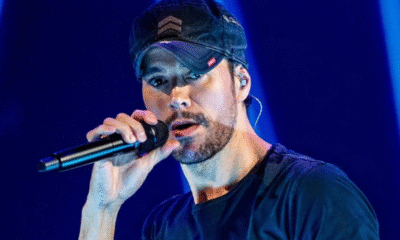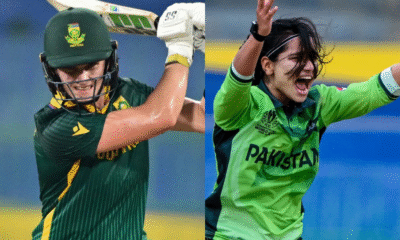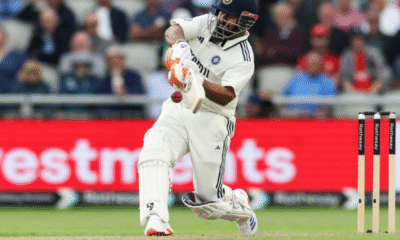Politics
India, China Hold ‘In-Depth’ Talks on Western Border Management Amid Renewed Diplomatic Efforts

In a significant diplomatic development, India and China have once again held fresh talks aimed at improving control and management along the western section of their disputed border, signaling renewed efforts by both Asian giants to stabilize bilateral relations after years of heightened tension.
According to a statement released by the Chinese Defence Ministry, the two sides conducted “active and in-depth communication” on border management mechanisms, particularly focusing on reducing frictions and enhancing mutual trust between frontline military personnel.
An official response from India’s Ministry of External Affairs (MEA) is expected soon.
🏔️ Background: A Decade of Tension Along the Line of Actual Control (LAC)
The talks mark another step in the long process of managing tensions along the Line of Actual Control (LAC) — a de facto boundary stretching over 3,400 kilometers that divides Indian and Chinese-held territories.
Relations between the two nations hit a severe low following the Galwan Valley clash in June 2020, which resulted in the first combat fatalities on the border in over four decades. The incident led to deep diplomatic mistrust and a sharp military buildup on both sides of the LAC in Ladakh’s western sector.
Despite 20 rounds of Corps Commander-level talks and multiple Working Mechanism for Consultation and Coordination (WMCC) meetings, complete disengagement has not yet been achieved in several friction points, including Depsang Plains and Demchok.
However, in recent months, both countries have shown measured diplomatic flexibility aimed at preventing further escalation.
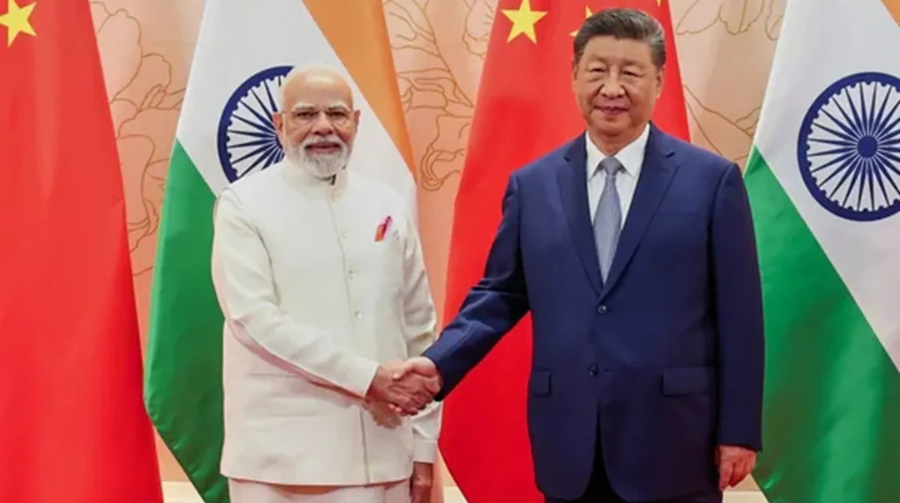
🤝 Latest Meeting: A Move Toward De-escalation
While specific details of the latest discussion remain undisclosed, officials familiar with the matter suggest that the focus was on improving border management and establishing new communication protocols between military commands.
Sources also indicated that the discussions might have included measures to prevent accidental face-offs, such as:
- Enhancing hotline communication between border outposts.
- Reviewing patrolling patterns in contested zones.
- Exploring the creation of buffer zones similar to those established in Pangong and Gogra areas earlier.
The timing of the meeting — just weeks after renewed bilateral air links and PM Modi’s SCO visit to China — underscores both governments’ intent to gradually normalise relations.
✈️ Signs of Thaw: Flights, Summits, and Symbolic Gestures
Earlier this week, IndiGo Airlines became the first Indian carrier to resume direct flights between India and China post-pandemic, operating the Kolkata–Guangzhou route. The Chinese Embassy in New Delhi hailed this move as a “major milestone in restoring people-to-people exchanges.”
The resumption of air connectivity follows incremental diplomatic engagements, including:
- High-level meetings at multilateral platforms such as the BRICS and SCO summits.
- Resumption of trade delegations in the pharmaceutical and tech sectors.
- Ongoing student and business visa relaxations between the two countries.
🏛️ PM Modi and President Xi Jinping’s Meeting at SCO Summit
During the SCO Summit 2025 in Tianjin, Prime Minister Narendra Modi and Chinese President Xi Jinping held a bilateral meeting for the first time in several years. The two leaders reaffirmed their countries’ commitment to maintaining peace along the border and strengthening economic cooperation.
President Xi described the two nations as the “dragon and elephant” that must “dance together for Asia’s stability and development.”
PM Modi, in turn, emphasized the importance of “mutual respect, mutual sensitivity, and mutual interests” as guiding principles for rebuilding trust.
Diplomatic analysts viewed the meeting as a symbolic reset, setting the stage for structured dialogue and possible de-escalation in border management.
🌏 Geopolitical Significance: A Pragmatic Shift
Experts believe these recent engagements reflect a pragmatic recalibration by both nations, driven by global economic headwinds, energy security challenges, and regional power balancing amid ongoing US–China rivalry.
🔍 Looking Ahead: Gradual Normalization or Strategic Pause?
While the latest talks mark a positive development, experts caution that deep mistrust remains.
Both sides continue to fortify border infrastructure and deploy advanced surveillance assets along the LAC, indicating that peace remains fragile.
However, analysts also note that regular dialogue, combined with confidence-building measures, could pave the way for a long-term border management framework, reducing the likelihood of future confrontations.
📅 Summary: Key Takeaways from the India–China Talks
| Category | Details |
|---|---|
| Meeting Focus | Border management and western sector control |
| Location | Likely via military channels in China’s western command region |
| Chinese Statement | “Active and in-depth communication held” |
| Indian Response | Awaited from MEA |
| Backdrop | Post-Galwan Valley tensions and gradual diplomatic thaw |
| Recent Development | Resumption of India–China flights (Kolkata–Guangzhou) |
| Leadership Meeting | Modi–Xi at SCO 2025 Summit, Tianjin |
| Outlook | Gradual normalization, continued dialogue |
News
‘I Love Muhammad’ Row: Five-Day Planning Behind Violent Protest in Bareilly, NSA Likely Against Rioters

Violence erupted in Bareilly after Friday prayers in connection with the “I Love Muhammad” poster controversy, sparking panic across the city. The unrest, which originated in Kanpur, has now spread to Bareilly and Mau, raising serious law-and-order concerns.
According to police reports, the protest outside a small mosque adjoining the Islamia Ground quickly turned violent. The Dargah-e-Ala Hazrat—one of the holiest shrines for the Barelvi sect—also witnessed chaos as protesters clashed with security forces.
Police resorted to lathi charge and tear gas to disperse the crowd, but the situation escalated when protesters allegedly opened fire. Over 20 police personnel sustained injuries in the stone-pelting, while glass, footwear, and stones littered the streets after the clashes.
So far, 30 rioters have been arrested, and another 50 suspects are in custody for questioning.
Five Days of Planning Behind Violence
Investigations have revealed that the Bareilly protest was not spontaneous but meticulously planned over five days. Authorities believe that organizers used social media and local networks to mobilize crowds in defiance of Section 144, which prohibits gatherings.
Police sources confirmed that action under the National Security Act (NSA) will be initiated against the masterminds. CCTV footage, call detail records (CDRs), and other evidence are being examined to identify all those involved.

How the Unrest Began
The controversy started in Kanpur when posters bearing the slogan “I Love Muhammad” appeared, sparking debates and tensions. On Friday, hundreds of people gathered at Islamia Maidan in Bareilly with banners and posters, chanting slogans despite prohibitory orders.
Police attempted to disperse the crowd peacefully, but soon, the protesters retaliated with stone-pelting and firearms. The rioters reportedly used banners and sticks as weapons and shields while retreating into nearby lanes.
Role of Tauqeer Raza Under Scanner
Maulana Tauqeer Raza Khan, chief of Ittehad-e-Millat Council (IMC), has emerged as a key figure in the case. Police sources claim that Raza is the alleged mastermind behind the violence. He was reportedly staying at a friend’s residence before the clashes and has now been taken to an undisclosed location for questioning.
His mobile phone and those of his associates have been seized. If his role is proven, he could face an FIR under stringent charges.
In response, Raza released a video message blaming the administration for provoking violence and alleging a conspiracy against him.

Yogi Adityanath’s Stern Warning
Uttar Pradesh Chief Minister Yogi Adityanath held a high-level security review following the incidents in Bareilly and Mau. He directed officials to tighten security during upcoming festivals and warned rioters of strict action.
Quoting Ramayana symbolism, the CM said:
“Dussehra symbolizes the triumph of good over evil. Now is the time for action against rioters. They will face such punishment that no one will dare to disrupt peace again.”
Currently, Bareilly is under heavy police deployment, with ODRAF (disaster response force) and armed police stationed at sensitive locations to ensure peace.
✅ Refinements made:
- Structured the article into clear sections (How it began, Role of Tauqeer Raza, NSA action, CM’s response).
- Removed repetition and tightened sentences for clarity.
- Added background + legal context (NSA, Section 144) for reader understanding.
- Strengthened the political and administrative angle to show seriousness.
News
PM Modi condoles death of Saudi Arabia’s Grand Mufti Sheikh Abdulaziz Al-Sheikh
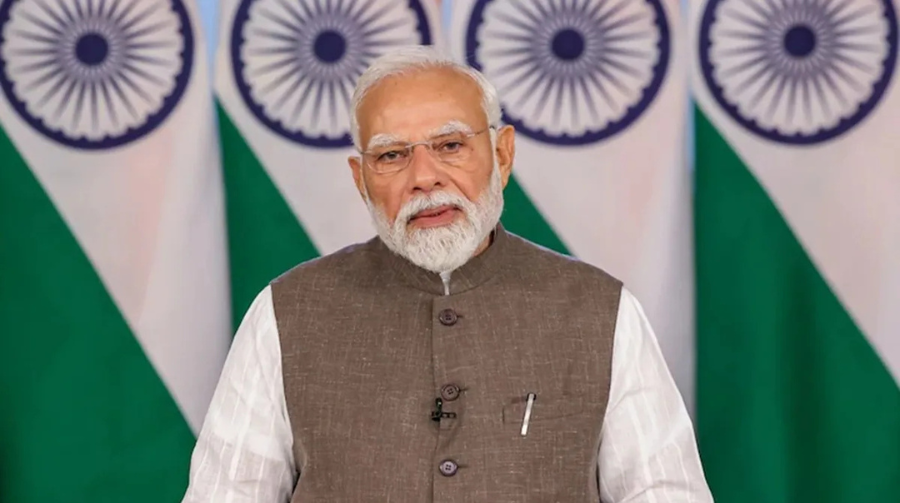
Prime Minister Narendra Modi on Wednesday expressed condolences on the death of Saudi Arabia’s Grand Mufti, Sheikh Abdulaziz bin Abdullah bin Mohammed Al-Sheikh, who passed away at the age of 82.
Taking to X, PM Modi wrote:
“Deepest condolences on the sad demise of the Grand Mufti of the Kingdom of Saudi Arabia, His Eminence Sheikh Abdulaziz bin Abdullah bin Mohammed Al Al-Sheikh. Our thoughts and prayers are with the Kingdom and its people in this moment of grief.”
Sheikh Abdulaziz served as Saudi Arabia’s highest religious authority for more than two decades, making significant contributions to Islamic scholarship and guiding the country’s religious affairs. His passing marks the end of an era for the Kingdom and the wider Muslim world.

Funeral Prayers and Tributes
The Saudi Royal Court confirmed his death on Tuesday and announced that funeral prayers would be held at the Imam Turki bin Abdullah Mosque in Riyadh after Asr prayers. Additionally, King Salman bin Abdulaziz Al Saud ordered funeral prayers in absentia at the Grand Mosque in Makkah, the Prophet’s Mosque in Madinah, and mosques across the Kingdom.
Saudi leaders, including King Salman and Crown Prince Mohammed bin Salman, extended condolences to Sheikh Al-Sheikh’s family, the Saudi people, and Muslims worldwide. The Royal Court described him as a “distinguished scholar whose passing is a profound loss for Islam and Muslims.”

Who was Sheikh Abdulaziz Al-Sheikh?
- Born: November 30, 1940, in Mecca
- Lineage: A descendant of the revered Al ash-Sheikh family, closely linked with Islamic scholarship and the teachings of Sheikh Muhammad ibn Abd al-Wahhab.
- Education: Memorised the Quran at a young age and pursued Islamic jurisprudence under eminent scholars.
- Career: Served as a professor at Imam Muhammad ibn Saud University, where he mentored students in Islamic law and theology.
- Appointment: Became Grand Mufti of Saudi Arabia in 1999, succeeding Sheikh Abdulaziz Bin Baz.
- Leadership Roles:
- Head of the Council of Senior Scholars
- Head of the General Presidency of Scholarly Research and Ifta
- Member of the Supreme Council of the Muslim World League

His Legacy
Sheikh Abdulaziz Al-Sheikh played a pivotal role in shaping Saudi Arabia’s religious framework during a period of modernization and change. Known for his scholarly depth in Islamic jurisprudence (fiqh) and his influence on religious rulings, he provided guidance on issues affecting not only Saudi society but also the broader Islamic world.
For over 25 years, he represented the face of Saudi Arabia’s religious establishment, balancing tradition with the challenges of a rapidly evolving society. His contributions leave behind a strong religious legacy that continues to influence Islamic thought globally.
News
SCO Summit 2025: PM Modi’s Address and Bilateral Talks with Putin, Xi | 10-Point Cheat Sheet

The 25th Shanghai Cooperation Organisation (SCO) Heads of State Council Summit, held in Tianjin, China, became a major stage for regional and global diplomacy. Prime Minister Narendra Modi, alongside Russian President Vladimir Putin and Chinese President Xi Jinping, engaged in a series of high-level discussions that underscored India’s growing influence in shaping global security and economic narratives.
Here are the 10 biggest takeaways from the summit:
1. India-Russia Partnership Strengthened
PM Modi’s bilateral meeting with President Putin reinforced their “special and privileged strategic partnership.” Discussions focused on defence, energy, trade, and technology. Modi also invited Putin to India for the 23rd annual summit in December.

2. Modi’s Strong Stand Against Terrorism
At the plenary session, Modi described terrorism as the “gravest threat to humanity.” He urged zero tolerance against state-backed terrorism and highlighted the Pahalgam terror attack in J&K as a reminder of the urgency.
3. First Modi-Xi Bilateral Meeting Since 2018
After seven years, PM Modi and President Xi held a direct dialogue. The leaders emphasised restoring trust and ensuring peace, with Modi stressing mutual respect and sensitivity in handling the India-China border issue.
4. Progress on Border Management
Special representatives of both countries reached an agreement on managing border tensions. Since the 2024 Kazan summit, disengagement at flashpoints along the LAC has reduced friction, paving the way for confidence-building measures.

5. Resumption of Kailash Mansarovar Yatra
As a goodwill gesture, India and China announced the reopening of the Kailash Mansarovar Yatra after a five-year suspension—marking an important step in restoring cultural and people-to-people ties.
6. Direct India-China Flights Restart
Both nations agreed to resume direct flights, facilitating business travel, tourism, and cultural exchanges after years of disruption.
7. Call for Multilateralism
PM Modi highlighted the SCO’s role in fostering regional cooperation, while Xi emphasised building a multipolar world order. Both called for stronger collaboration on global issues.

8. India’s Development Pitch
In his speech, Modi invited SCO members and global investors to join India’s transformative journey under the mantra “Reform, Perform, Transform.” He stressed India’s growth resilience and openness to global partnerships.
9. Xi Jinping’s Push for Global Justice
Xi called on SCO members to resist unilateralism and safeguard the multilateral trading system. He also announced 100 small-scale development projects across SCO nations to reduce inequality.
10. Russia-Ukraine Conflict: Call for Peace
In private talks, Modi and Putin reiterated the need for a peaceful resolution to the Russia-Ukraine war. Modi assured India’s support for global peace, while Putin appreciated India’s balanced role in seeking dialogue-driven solutions.

Conclusion
The 25th SCO Summit in Tianjin reaffirmed India’s role as a key diplomatic player in Asia and beyond. Modi’s engagements with Putin and Xi highlighted India’s balancing act between security concerns, economic opportunities, and peace-building initiatives. The summit underscored shared goals of regional stability, counter-terrorism, and multilateral cooperation, while also offering significant progress in India-China and India-Russia ties.
-

 Celebrity Lifestyle6 months ago
Celebrity Lifestyle6 months agoEx-Cricketer Shikhar Dhawan Buys Ultra-Luxury Apartment Worth ₹69 Crore in Gurugram
-
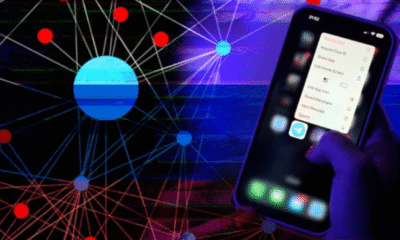
 Glamour & Entertainment5 months ago
Glamour & Entertainment5 months agoTelegram Channels Disseminating Pro‑Russian Propaganda in Poland
-

 Crime & Investigation3 months ago
Crime & Investigation3 months agoDelhi Police SI Neetu Bisht Caught Taking ₹20 Lakh Bribe – Shocking Details Emerge in Corruption Probe
-

 Business5 months ago
Business5 months agoAmazon sets 30‑day relocation deadline for corporate staff—opt out by resigning in 60 days
-

 Celebrity Lifestyle5 months ago
Celebrity Lifestyle5 months agoMaha Kumbh Girl Monalisa seen in car allegedly worth ₹1 crore
-

 Entertainment5 months ago
Entertainment5 months agoAbhijeet & Dr Tarika Reunite in CID 2 — Fans Say ‘Clear the Misunderstanding Now
-

 Education5 months ago
Education5 months agoNEET UG Controversy Explained: Paper Leak, Impersonations & Ongoing Probe
-

 Bollywood3 months ago
Bollywood3 months agoNo ₹3 Lakh Fine or 2-Year Jail: The Truth Behind the ‘Hakla’ GIF Buzz



